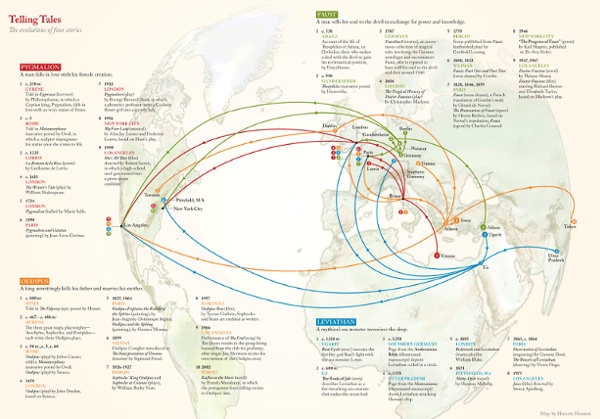



Think ..."Some time ago I received a call from a colleague. He was about to give a student a zero for his answer to a physics question, while the student claimed a perfect score. The instructor and the student agreed to an impartial arbiter, and I was selected. The student had answered, "Take the barometer to the top of the building, attach a long rope to it, lower it to the street, and then bring the rope up, measuring the length of the rope. The student really had a strong case for full credit since he had really answered the question completely and correctly! I suggested that the student have another try. In the next minute, he dashed off his answer which read: "Take the barometer to the top of the building and lean over the edge of the roof. At this point, I asked my colleague if he would give up. "Well," said the student, "there are many ways of getting the height of a tall building with the aid of a barometer. "Fine," I said, "and others?" "A very direct method." "Of course.
Damn Interesting Video Games Represent the Most Powerful (and Potentially Dangerous) Era in Storytelling | Paul Runge Over the course of one weekend, I lost 12 hours, 42 minutes and 1 second. I don't know how it happened. It took me like a fever. I somehow slipped into watching a 56-part YouTube playthrough of The Last of Us, a video game recently released by Naughty Dog Inc. The game, which earned a 95 out of 100 on Metacritic, features a gnarly but loyal 48-year-old named Joel and a scrappy teenager named Ellie. It is, I should say, a truly top-notch game. The characters, story, and aesthetic are complex and well-composed, and as a result, everything about the game feels literally (and figuratively) 3D. Increasingly, this seems to be the objective of the gaming industry. So, do you buy it? Maybe you should, but not as it's stated above. Video Games as Expressive and Formative In the 2006 documentary, The Pervert's Guide to Cinema, celeb cultural theorist Slavoj Zizek expounded on the 1999 blockbuster, The Matrix. Here, I urge you to consider Zizek's proposition seriously; it's really not so esoteric.
Infecting An Audience: Why Great Stories Spread In his 1897 book What is Art? the great Russian novelist Leo Tolstoy defined art as “an infection.” Good art, Tolstoy wrote, infects the audience with the storyteller’s emotion and ideas. Note that this goes against our culture’s dominant idea about stories. For instance, if psychologists get a bunch of people in the lab and just tell them all the reasons it is wrong to discriminate against homosexuals, they don’t make much progress. So stories have a unique ability to infect minds with ideas and attitudes that spread contagiously. And how do we make an audience lose themselves? But stories are not usually about meaningless problem solving. In a business setting, this makes story a natural vehicle for conveying our ideas, our values, our vision. The neuroeconomist Paul Zak studies how this works at a brain level. But Zak stresses, as I do, that the information about the sick child has to be presented in a classic story structure. This all raises another question.
StoryCorps Hits 10th Birthday: A Mission Core to Humanity October 23, 2013; New York Times, “City Room” Ten years. 55,000 interviews. 90,000 participants. One mission: telling our stories. The storytelling started in a sparse booth in Grand Central Terminal, New York and grew to a nationwide initiative of ordinary people telling their personal stories. StoryCorps is a nonprofit organization dedicated to providing “people of all backgrounds and beliefs with the opportunity to record, share, and preserve the stories of our lives.” Many StoryCorps recordings have been broadcasted nationally on NPR’s Morning Edition and are available on the organization’s website. As StoryCorps turns 10 this year, it gives us an opportunity to reflect on the value of storytelling. For example, the New York Times reports, “There is the homeless woman who was so moved by her [StoryCorps] recording, calling it the most important thing she’d ever done in her life, that she tried to donate her food stamps to the staff members as her voluntary donation.”